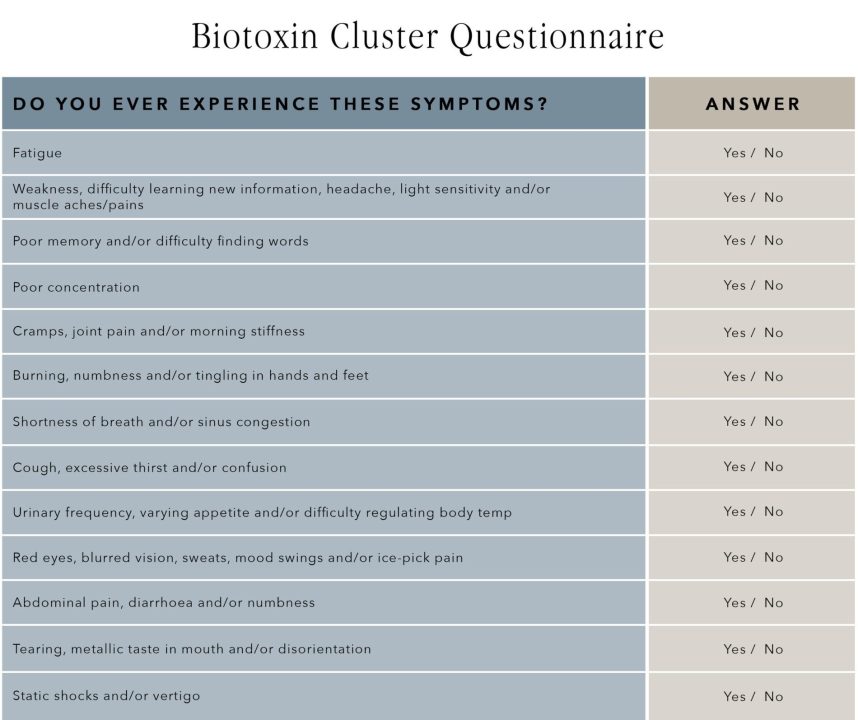
By Reine DuBois and Alexandra Preston
Australia is a land of flood and fire, but your home does not have to be swept away by floods to be a problem. Left alone, water damage can create fertile ground for toxic mould, a cause of many chronic illnesses far more common than we think. Although moulds are a normal part of the natural world, when they grow indoors they can cause health problems. Formerly healthy, high-achieving patients report struggling to get by, trying to push through often debilitating symptoms while searching for an accurate diagnosis, sometimes only to be told “it’s all in your head”. Fortunately, toxic mould has recently gained more attention in the media and society, as patients are determined to heal.
One example of this is the story of MP Lucy Wicks. Certain places would “turn her brain to mush”, making her forget what she was saying mid-conversation. She also developed asthma and pneumonia several times. It wasn’t until she connected the onset of her symptoms to a tree that crashed through her roof resulting in water damage to produced mould, that she was diagnosed with Chronic Inflammatory Response Syndrome (CIRS) and began to heal after moving from the house.
Around 1500 Australians have been diagnosed with CIRS, which is caused by the buildup of toxins from sources such as mould, but doctors who specialize in treating the toxic effects of mould estimate that the true number could be in the tens of thousands.
The diverse range of potential symptoms, which is due to the many ways toxins can affect the body, means that CIRS is often met with the same skepticism as Lyme disease in Australia. Depending on their symptom presentation, patients may be instead diagnosed with asthma, dermatitis, chronic fatigue, a possible neurological disease, or something else entirely. Reine DuBois, our Clinical Director and senior naturopath, states that “All chronic health conditions could be a result of mould, if you are part of the 25% of the population that carry the HLA genotype susceptibility.”
Moisture control is the key to preventing mould growth. Any leaky plumbing or spots in your roof or walls must be repaired. In the case of severe weather, any water-damaged areas must be dried within 24-48 hours for the best results. Wash mould off of hard surfaces with water and detergent, but still allow it to completely dry. Absorbent materials such as carpet may need replacing.
Unfortunately, some patients still suffer from toxic mould long after their homes are cleaned and restored. Research has shown that moulds such as Aspergillus and Penicillium can infect the nasal and sinus cavities, and secrete toxins detectable in the urine and tissues. They protect themselves by producing a biofilm, and can be so persistent as a result that many patients resort to nasal or sinus surgery. Besides mould growth itself, Reine DuBois lists factors that can also influence mould-related illness such as “viral and bacterial infection, heavy metal toxicity, environmental pollution, stress and trauma and candida overgrowth.”
If you suspect that you have a mould-related illness, Reine DuBois advises: “I would recommend going online and doing the visual contrast screen – VCS (https://www.survivingmold.com/store1/online-screening-test). If you fail this test it is possible that neurotoxins are affecting your health. There is also the Biotoxin Cluster Questionnaire. If you answer ‘yes’ to eight or more, it’s possible that you are suffering from a biotoxin illness, which could be coming from mould toxicity.” She adds, “A yes to any one of these symptoms in the cluster questions equals a yes.” These clusters are:

For patients diagnosed with mould-related illnesses will require a combined approach to recover. The naturopaths and doctors working at The Health Lodge are well versed in treating such conditions. This could involve herbal medicine, pharmaceutical medications, dietary supplements, diet and lifestyle advice, as well as removing the mould from your home. Just as there are many manifestations of mould toxicity, there are many solutions; if you suspect you may be suffering after completing the tests above, feel free to book an appointment with us here.
References
https://www.epa.gov/mold
http://www.mdpi.com/2072-6651/6/1/66/htm
https://www.9news.com.au/national/2018/04/30/11/59/mould-in-your-home-mp-calls-for-national-inquiry
https://www.survivingmold.com/mold-symptoms/understanding-the-illness
Hechtman, L, 2014, Clinical Naturopathic Medicine, Elsevier



